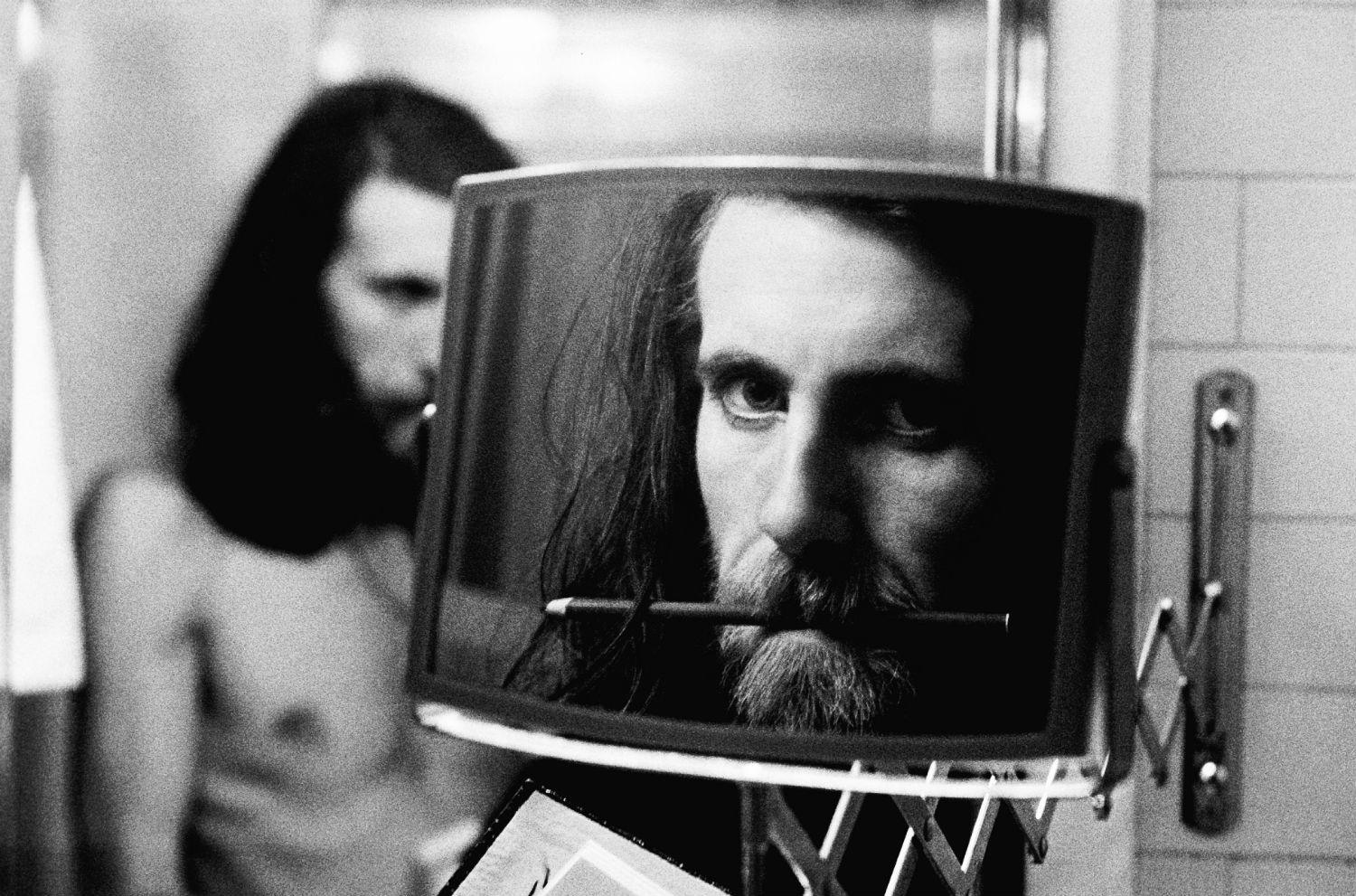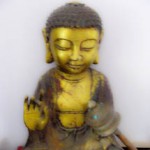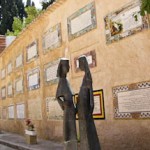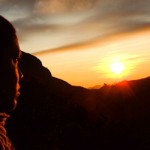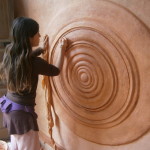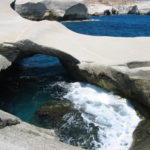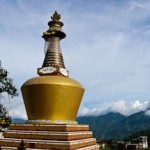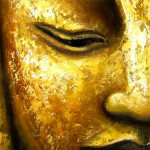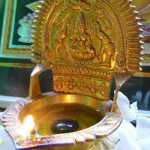Who am I?

Self-inquiry vs. Self-definition
The art world is saturated with attempts to apply creative energy in an exploration of personal, cultural and communal self-definition. Modern artist typically make an effort to portray and define ‘who they are’, in the format of an image of themselves; a portrait of themselves as they see themselves, or as they would like to see themselves or as they think others see them or as they would like others to see them.
This is very familiar in modern day art, pop art, as well as in fashion, music, movies, endless personal selfies, ext., just about everywhere. It seems that the question so-called ‘creativity’ loves to answer is “who am i?”
This question surprisingly or not, is a key and core question in spirituality. Sacred texts, sages, spiritual masters, meditation teachers and holy saints have been, for centuries, going around the primary question “who am I?”.
Renounced modern spiritual teachers such as Ramana Maharishi, Nisargadata Maharaj, and Krishnamurti have placed this question at the very center of their teaching. And not only them, but pretty much anyone that has ever sincerely sat meditation, has sat with the fundamental attempt of find “who am I?
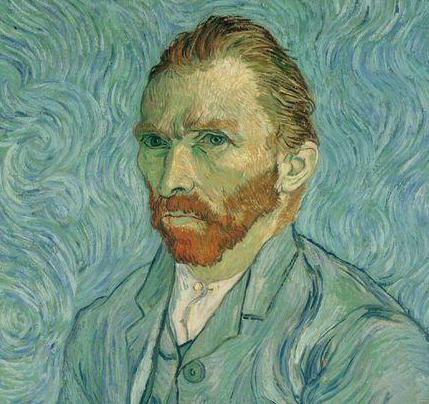
One but not the same
Quoting the word of U2 “We are one but we are not the same”, can be made with reference to this one same question.
Can it be that the question “who am I” has two (or more) totally and completely different meanings?
Is it that same question that these two worlds – Art and Spirituality, put at the center of their search? At the base of their work? Is it that same “I” that is been questioned, examined and looked into? Can it be that the same exact question is actually referring and addressing two totally different subjects, different “I”, and that confusing, one with the other, is an utter mistake?
For some mysterious reason we assume that when we communicate, we are understood in the way we intended to be understood, and when we hear other talking, we assume we understand them as they wanted to be understood, but what if it was not so?
What if we have no idea what another person is talking about, but we just impose on their words something that makes sense to us?
This kind of room for interpretation is even more critical and significant when we are talking about spiritual wisdom and experiences, understandings and one’s inner state, which very dramatically among people. We are not all of the same quality and clarity of the inner state, we are not all the same. Assuming we can understand another’s inner state, particularly that of a spiritual master, can be simply wrong and misguiding.
inner state, which very dramatically among people. We are not all of the same quality and clarity of the inner state, we are not all the same. Assuming we can understand another’s inner state, particularly that of a spiritual master, can be simply wrong and misguiding.
Furthermore, even within the circle of spiritual teachers, they are not all the same, they have not all achieved the same spiritual level and clarity of understandings. Therefore assuming they are all talking about the same thing, the same experience and the same “I”, would be to simplify reality, leading to wrong understanding and confusing.
The Artist’s “who am I”
An artist typically investigates within their self-exploration their outer shell: their gender, their body, their sexuality, their personality, their past, traumas and pains, dreams and hope for the future, their momentary moods, their thoughts and feelings. These as well as their culture and community, their place in society, their job and surroundings. These they regard as their very own, these are the colors they use to paint their self-image.
These elements they see as the components that make up who they are, and are all needed to create a coherent and interesting self-definition. They see all these attributes as those which make them unique, special, individual.
Yet, while these aspects may contribute to make up who one person has become, they by no means are who one is.
We are more than our body, although our body is important, we are more than that.
We are more than our mind, with all the thoughts, feeling and memories within it.
While the mind plays a huge role in our lives, we are bigger them the sum of its content. We are more than our past and imaginary future, we are, ever now, and that is the greatest inquiry of all.
Portraying a Mask
Exploring one’s sexuality, gender and mind is fine, even important, but it is not self-inquiry, it is not an inner search. It is an exploration of ones persona – which is only our outer layer, our “mask”. The term persona in Latin literally means “mask”; a mask originally used in theater plays.
A mask, as significant a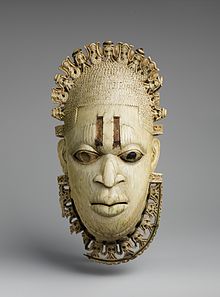 s it may be, can be changed, it can be altered, destroyed or be beautified, but clearly the mask one wears is not who one is. The mask is not the one that is underneath.
s it may be, can be changed, it can be altered, destroyed or be beautified, but clearly the mask one wears is not who one is. The mask is not the one that is underneath.
Obviously, there is a level of choice when one wears a mask. We choose, at least to a certain degree, the mask that we wear. And we all wear some mask. In it’s essence, it is natural, as natural as our skin. Yet when we try to put on some “show” that is when we become fake in our mask-wearing.
One is born into a certain body, body size, skin color, gender, psychological condition and physical health. Born into a certain culture, religion, country, surroundings, family, home. Into a time in history and into their own very character, with its own very nature. These are the facts we are born into.
What we do from here on, is our choice. What we empower and what we renounce, what we give importance to and what we disregard, is a combination of willpower, inner strength and the direction we give our lives.
The self-image we have of ourselves is a combination of the facts  and the story we weave with them.
and the story we weave with them.
Whichever story it is, and no matter how boring or interesting that story is – it is a story.
However genuine or fake that mask that we wear is, – it is still a mask.
We must take a step back from that story we have told ourselves, from that mask we have sculptured. We must step back from our mind and the self-image we have created for ourselves, in an attempt to go within, and explore who we really are, who is behind the mask.
As long as we are imprisoned within the boundaries of our self-definition we can never find who we are beyond it. As long as we believe we are the mask which we wear, we will never dare to remove it and meet ourselves. Naked and bare.
It is by daring to take the mask off that we give birth to the one that is underneath. As we meet ourselves we are becoming, we become who we are.
